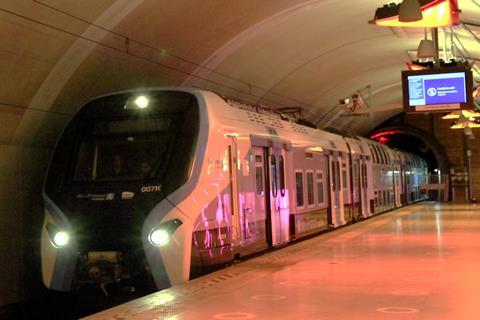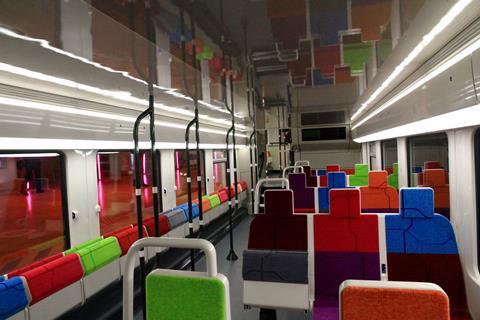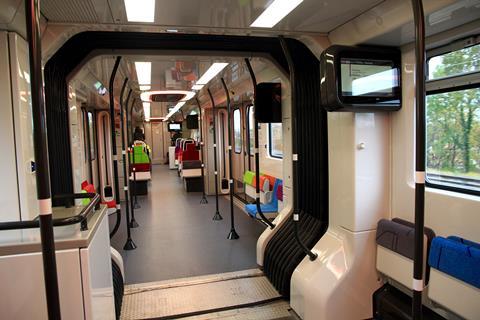
FRANCE: Transport authority Ile-de-France-Mobilités and operator Transilien SNCF Voyageurs put the first Alstom RER NG electric multiple-units into passenger service on Paris Line E on November 13.
On January 11 2017 a €1.15bn contract for 56 EMUs for use on Line E and 15 for Line D was signed by IDFM and what was then a consortium of Alstom and Bombardier Transportation. On April 26 this year SNCF Voyageurs exercised an option for a further 23 units for Line D and 37 for Line E.
Production is being undertaken at Valenciennes Petite-Forêt and Crespin.
Deployment on Line E will be gradual, starting on the Haussmann-St-Lazare - Chelles Gournay branch and taking until the end of 2026. The EMUs are needed for the extension of Line E services west from Haussmann-St-Lazare to Nanterre-La-Folie which is planned in stages from April 1 2024.
Entry into service on Line D is planned to begin at the end of 2024 and run through to 2028.

The six-car Class Z58000 units for Line E are 112 m long with a capacity of 1 560 passengers, while the seven-car Class Z58500 units for Line D are 130 m long with a capacity of 1 800 passengers. The end cars are single-deck, while the intermediate cars are double-deck.
Alstom says the EMUs will reduce energy consumption by 25% compared to the existing fleet, thanks to the use of regenerative braking. The use of eight powered bogies on a seven-car set will also provide faster acceleration at 1.1 m/s².

The dual-voltage 1·5 kV DC and 25 kV AC EMUs have a maximum speed of 140 km/h. They are fitted with both ETCS and the French legacy KVB train control system, and there is provision for the installation of NExTEO equipment, which could support GoA2 driver-supervised automated operation on the central section of Line E from Pantin to Nanterre-La-Folie.
Each EMU offers a mix of three types of passenger space, reflecting the nature of RER operations. The lower deck has standing space for people making very short journeys and seats for journeys of less than 20 min, while the upper deck has a wider seat spacing to provide more comfort for passengers making longer regional journeys. The trains have CCTV, air-conditioning and USB charging sockets.

















